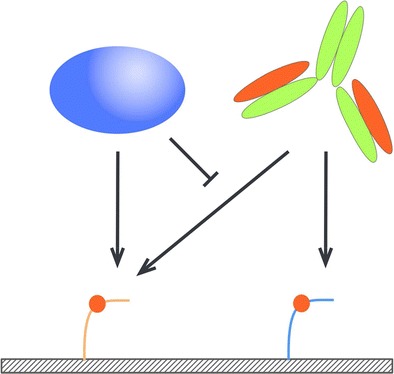- Record: found
- Abstract: found
- Article: found
A microarray-based approach to evaluate the functional significance of protein-binding motifs

Read this article at
Abstract
Intracellular proteins comprise numerous peptide motifs that interact with protein-binding domains. However, using sequence information alone, the identification of functionally relevant interaction motifs remains a challenge. Here, we present a microarray-based approach for the evaluation of peptides as protein-binding motifs. To this end, peptides corresponding to protein interaction motifs were spotted as a microarray. First, peptides were titrated with a pan-specific binder and the apparent K d value of this binder for each peptide was determined. For phosphotyrosine-containing peptides, an anti-phosphotyrosine antibody was employed. Then, in the presence of the pan-specific binder, arrays were competitively titrated with cell lysate and competition constants were determined. Using the Cheng-Prusoff equation, binding constants for the pan-specific binder and inhibition constants for the lysates were converted into affinity constants for the lysate. We experimentally validate this method using a phosphotyrosine-binding SH2 domain as a further reference. Furthermore, strong binders correlated with binding motifs engaging in numerous interactions as predicted by Scansite. This method provides a highly parallel and robust approach to identify peptides corresponding to interaction motifs with strong binding capacity for proteins in the cell lysate.
Related collections
Most cited references28
- Record: found
- Abstract: found
- Article: not found
Global analysis of protein activities using proteome chips.
- Record: found
- Abstract: found
- Article: not found
